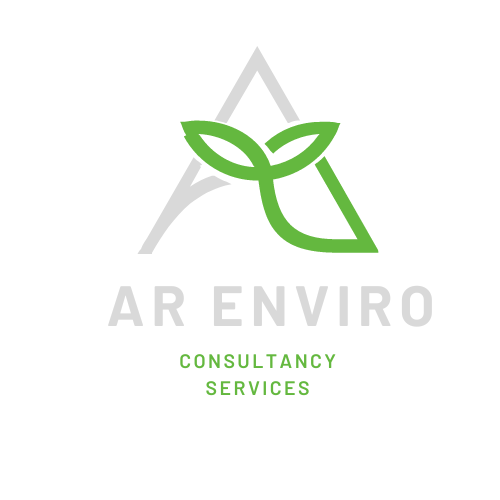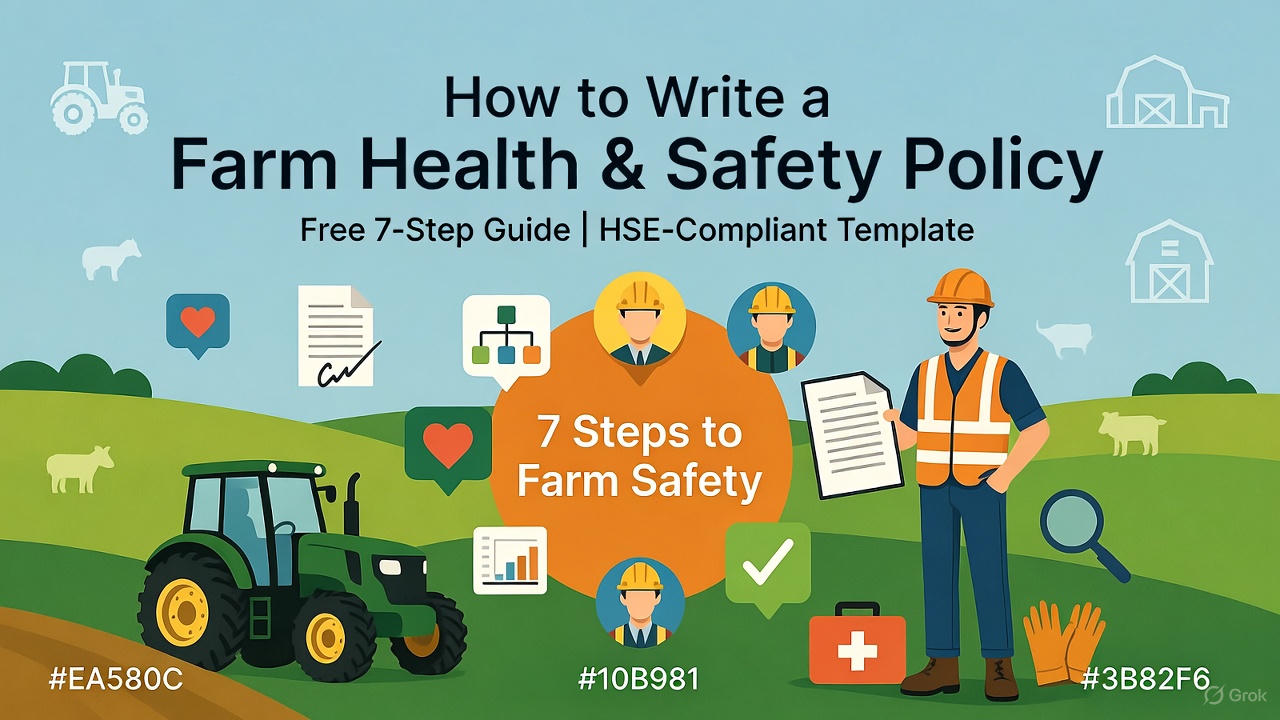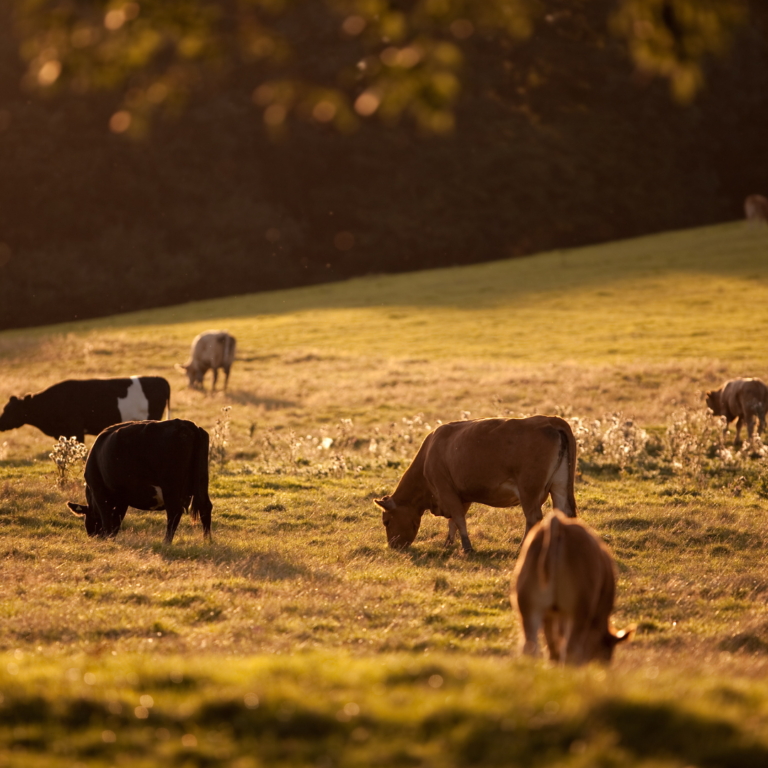Every farm is a workplace — and under UK and Northern Ireland law, every farm with 5 or more employees (or regular contractors) must have a written health and safety policy.
But writing a farm health & safety policy doesn’t have to be complicated, expensive, or time-consuming.
This free, step-by-step guide walks you through creating a fully HSE-compliant farm health and safety policy in just 7 clear steps. No jargon. No paywalls. No downloads.
Whether you run a dairy unit, arable farm, livestock enterprise, or mixed holding — this guide gives you a practical template you can adapt today.
From the signed statement of intent to risk assessments, training, welfare, and annual reviews — everything is laid out with real farm examples and legal references for England, Scotland, Wales, and Northern Ireland.
How to Write a Farm Health & Safety Policy in 7 Steps
A free, HSE-compliant guide you can follow today – no downloads, no pay-walls.
Important Legal Notice
This guide provides general information and a template structure only. It is not a substitute for professional advice. You must adapt this policy to your specific farm, risks, and legal jurisdiction (England, Scotland, Wales, or Northern Ireland).
Always consult a qualified health & safety advisor or solicitor before finalising your policy.
Write the Policy Statement
Start with a clear commitment to health, safety and welfare. This is the opening "statement of intent" and should be signed and dated by the most senior person (e.g., owner, director, or partner). Include a review date (typically annual).
Key Legal Reference (adjust for your location) Jump to full UK comparison
- England, Scotland, and Wales: Health and Safety at Work etc. Act 1974
- Northern Ireland: Health and Safety at Work (Northern Ireland) Order 1978
[Health and Safety at Work etc. Act 1974 or Health and Safety at Work (Northern Ireland) Order 1978]
This is the Health and Safety Policy Statement of
[Farm Name]
The [Owners / Directors / Partners] of [Farm Name] recognise and accept their responsibility to ensure, so far as is reasonably practicable, the health, safety and welfare of all employees, contractors, visitors, and members of the public who may be affected by our activities.
It is our aim to promote, set and maintain the highest standards for health, safety and welfare. This will be achieved by:
• Providing adequate control of the health and safety risks arising from our work activities.
• Consulting with employees on matters affecting health and safety.
• Providing and maintaining safe plant and equipment.
• Ensuring safe handling, storage and use of substances.
• Providing adequate information, instruction, training and supervision for employees.
• Ensuring all employees are competent to do their tasks and providing appropriate training.
• Preventing accidents and cases of work-related ill health.
• Maintaining safe and healthy working conditions.
• Reviewing and revising this policy at least annually or when significant changes occur.
We will endeavour to eliminate hazards that may result in personal injury, ill health, fire, property damage or harm to the environment.
Signed: _______________________________ Print Name: _______________________________
Position: _______________________________ Date: _______________________________
Review Date: _______________________________
Helpful Tips for Customising Your Statement
- Personalise it: Replace placeholders like [Farm Name] and [Owners / Directors / Partners] with specifics.
- Keep it concise but comprehensive: Aim for 1 page. Bullet points make it readable.
- Farm-specific risks: Consider adding references to common farm hazards (e.g., machinery, livestock, chemicals) if space allows.
- Legal phrasing: Use "so far as is reasonably practicable" – this is key legal wording.
- Signature & review: The signatory must have authority. Set a review date (e.g., 12 months) and diarise it.
- Display it: Once signed, display the statement on the farm (e.g., in the office or staff room).
Assign Responsibilities
The law requires you to clearly state who is responsible for health & safety on the farm. This section (often called “Organisation” or “Roles & Responsibilities”) must name the people or posts that will make sure the policy is put into practice.
| Role / Person | Key Duties |
|---|---|
| [Owner / Farm Manager] | Overall accountability for health & safety; ensuring resources are provided; signing the policy; annual review. |
| [Health & Safety Coordinator / Deputy] | Day-to-day coordination; risk assessment updates; accident reporting; training records; liaison with HSE. |
| [All Supervisors / Foremen] | Implement safe systems of work; supervise machinery & chemical use; enforce PPE; report hazards. |
| [All Employees & Contractors] | Take reasonable care of themselves & others; cooperate with safety rules; use equipment correctly; report defects. |
| [Visitors / Delivery Drivers] | Follow site rules; wear provided PPE; stay in designated areas; report to the office on arrival. |
1. [Owner / Farm Manager] has overall responsibility for health, safety and welfare on the farm and will ensure that adequate resources are made available.
2. [Health & Safety Coordinator] is appointed to manage day-to-day health & safety matters, including risk assessments, training records and accident investigations.
3. All Supervisors are responsible for implementing safe systems of work within their areas, ensuring PPE is worn and reporting any hazards immediately.
4. Every Employee & Contractor must take reasonable care for their own safety and that of others, cooperate with the farm’s safety rules and report any defects or dangerous situations without delay.
5. Visitors must follow site induction, wear any required PPE and remain in authorised areas.
Helpful Tips for Step 2
- Name real people or posts – avoid generic “management”. E.g., “John Smith (Farm Manager)”.
- Keep it proportionate – a one-person farm may only need Owner + All Workers.
- Include contractors & visitors – they are “others affected” under the law.
- Reference competence – state that anyone given a duty must be competent (training, experience).
- Display the chart – print the table and pin it next to the policy statement.
Employee & Contractor Responsibilities
While the farm owner and managers have overall duties, every person working on the farm has legal responsibilities under health and safety law. These must be clearly stated in your policy so everyone knows what is expected.
Legal Basis (Northern Ireland)
Article 7 & 8 – Health and Safety at Work (Northern Ireland) Order 1978
(Equivalent to Section 7 & 8 of the 1974 Act in GB)
All Employees & Contractors Must:
- Co-operate with the farm owner, manager, and supervisors on all health and safety matters.
- Take reasonable care for their own health and safety and that of others who may be affected by their actions or omissions at work.
- Co-operate fully to enable the farm to comply with any legal duty or requirement under health and safety law.
- Not interfere with or misuse anything provided for health, safety, or welfare (e.g., guards, PPE, warning signs) – whether intentionally or recklessly.
- Report immediately any accident, injury, near miss, or unsafe working condition to the supervisor or farm manager.
- Use equipment correctly – only operate machinery or handle chemicals if trained and authorised.
- Wear required PPE at all times when carrying out hazardous tasks (e.g., hearing protection near machinery, gloves when handling chemicals).
Important – Disciplinary Action
Failure to comply with these responsibilities may result in disciplinary action, up to and including dismissal.
All persons working on or visiting [Farm Name] have a legal duty under the Health and Safety at Work (Northern Ireland) Order 1978 to:
• Co-operate with management on health and safety matters.
• Take reasonable care for their own health and safety and that of others who may be affected by their acts or omissions at work.
• Co-operate with the farm to enable it to fulfil any duty or requirement imposed by law.
• Not intentionally or recklessly interfere with or misuse anything provided in the interests of health, safety or welfare.
• Report any accident, injury, near miss or unsafe condition immediately.
Failure to comply may lead to disciplinary action.
Helpful Tips for Step 3
- Make it visible: Include this in induction packs, staff handbooks, and on noticeboards.
- Get acknowledgment: Have all workers sign a form to confirm they’ve read and understood their duties.
- Train on reporting: Show how to report hazards – e.g., “Tell the yard supervisor or text the farm WhatsApp group”.
- Apply to contractors too: Include this clause in contractor agreements or site rules.
- Use plain English: Avoid jargon – say “don’t mess with safety gear” instead of just legal text.
Arrangements for Health & Safety
This is the practical "how" section of your policy. It explains the systems, procedures, and controls in place to manage health and safety on the farm. It must cover all significant risks and be reviewed regularly.
Tip: Keep this section up-to-date. Review it whenever you introduce new machinery, chemicals, or working methods.
4.1 Risk Assessments
Legal basis: Management of Health and Safety at Work (NI) Regulations 2000
4.1.2 Suitable control measures will be implemented to reduce risks to the lowest reasonably practicable level.
4.1.3 Findings will be recorded and communicated to all relevant workers, contractors, and visitors.
4.1.4 Risk assessments will be reviewed at least annually or following any incident, near miss, or significant change.
4.1.5 [Farm Manager / Health & Safety Lead] is responsible for ensuring risk assessments are completed, actioned, and reviewed.
Farm Examples: Tractor rollover, slurry pit gases, quad bike safety, calf rearing, grain dust, ladder use.
4.2 Consultation & Communication with Employees
Legal basis: Health and Safety (Consultation with Employees) Regulations (NI) 1996
4.2.2 Workers are encouraged to raise concerns directly with [Farm Manager / Supervisor] at any time.
4.3 Safe Plant & Equipment
Legal basis: PUWER 1999 & LOLER 1999
• Maintenance schedules will be drawn up and followed (daily checks, servicing, PUWER inspections).
• Lifting equipment (e.g., front loader, slings) will be thoroughly examined by a competent person every 12 months (LOLER).
• Defects must be reported immediately to [Supervisor].
• New or hired equipment will be checked for safety compliance before use.
• Where possible, low-vibration and low-noise equipment will be selected.
4.4 Safe Handling & Use of Substances (COSHH)
Legal basis: COSHH (NI) Regulations 2003
• COSHH assessments will be completed and control measures implemented (e.g., PPE, ventilation, spill kits).
• Safety Data Sheets (SDS) will be kept in the farm office.
• Assessments will be reviewed annually or when substances change.
• All users will be trained in safe handling and emergency procedures.
4.5 Competency, Training & Supervision
• Job-specific training (e.g., tractor driving, chemical handling, livestock handling) will be provided.
• Only trained and authorised persons may operate machinery or handle chemicals.
• Training records are kept in [Farm Office].
• [Health & Safety Lead] will identify training needs and arrange refresher courses.
4.6 Accidents, First Aid & Work-Related Ill Health
Legal basis: RIDDOR 1997
• [Health & Safety Lead] will investigate and implement preventive actions.
• RIDDOR-reportable incidents will be notified to HSENI by [Farm Manager].
• First aid kits are located in: [Office, Workshop, Milking Parlour].
• Trained first aiders: [List Names].
• No alcohol or non-prescribed drugs permitted on site. Prescribed medication affecting safety must be declared.
4.7 Emergency Procedures – Fire & Evacuation
• Escape routes kept clear and checked weekly.
• Fire extinguishers serviced annually.
• Emergency drill held annually.
• Assembly point: [Front Yard / Gate].
• No smoking on site. Hot works require a permit.
4.8 Personal Protective Equipment (PPE)
• [Supervisor] will issue PPE and ensure visitors comply.
• Workers must wear PPE as directed. Failure may lead to disciplinary action.
• Report lost or defective PPE immediately.
4.9 Monitoring & Review
• This policy and its arrangements will be reviewed at least annually or following significant changes.
• Feedback from workers and incidents will inform improvements.
Helpful Tips for Step 4
- Keep records: Risk assessments, training logs, maintenance records, accident book.
- Use simple forms: Create one-page risk assessment templates for common tasks.
- Display key info: HSE Law Poster, emergency numbers, first aid locations.
- Train everyone: Even seasonal workers need induction and task-specific training.
- Review after incidents: A near miss is a free lesson — act on it.
Welfare & Young Persons / Vulnerable Workers
The farm must provide adequate welfare facilities and give extra protection to young workers (under 18), new or expectant mothers, lone workers, and anyone with health conditions that may increase risk.
5.1 Welfare Facilities
Legal basis: Workplace (Health, Safety and Welfare) Regulations (NI) 1993
• A rest area with seating, away from work hazards (e.g., in the farm office or mess room).
• Drinking water available at all times.
• Changing facilities if workers need to change into protective clothing.
• Facilities are cleaned regularly and checked weekly by [Supervisor].
Farm Tip: For remote fields, provide portable toilets and hand-washing stations during busy periods (e.g., silage, harvest).
5.2 Young Persons (Under 18)
Legal basis: Management of Health and Safety at Work (NI) Regulations 2000 – Regulation 3(5)
Special Risk Assessment Required
A specific risk assessment must be done before any young person starts work.
• Prohibited tasks: working in confined spaces, high silos, bull pens, or with dangerous animals.
• Working hours: comply with Children (NI) Order 1995 – no night work, limited hours.
• [Farm Manager] will complete a Young Person Risk Assessment before employment begins.
• Close supervision at all times by a competent adult.
5.3 Vulnerable Workers
-
New or Expectant Mothers
Management of Health and Safety at Work (NI) Regulations 2000 – Regulation 18
• Must inform [Farm Manager] in writing as soon as pregnancy is confirmed.
• Specific risk assessment completed (e.g., avoid heavy lifting, zoonotic diseases, chemical exposure).
• Adjust duties or provide alternative work if risks cannot be controlled. -
Lone Workers
• Risk assessment for lone working (e.g., checking cattle at night, remote field work).
• Check-in system: phone or radio contact every 2 hours.
• Emergency plan: GPS location, torch, first aid kit, lone worker alarm if available. -
Workers with Health Conditions
• Encouraged to disclose conditions affecting safety (e.g., epilepsy, diabetes).
• Individual risk assessment and reasonable adjustments made.
5.1 Welfare Facilities
• Toilets, hand-washing, drinking water, and rest areas are provided and maintained in a clean condition.
5.2 Young Persons (Under 18)
• A specific risk assessment will be carried out before any young person starts work.
• They will not undertake prohibited high-risk tasks (e.g., tractor driving, chemical handling).
• Close supervision and limited hours apply.
5.3 Vulnerable Workers
• New/expectant mothers must notify management for a specific risk assessment.
• Lone workers will follow a check-in procedure.
• Health conditions affecting safety must be disclosed confidentially.
Helpful Tips for Step 5
- Use a simple form: Create a one-page “Young Person / New Mother Risk Assessment” template.
- Display welfare info: Pin a map showing toilets, water, first aid, and rest areas.
- Train supervisors: They must know the law on young workers and pregnancy risks.
- Encourage disclosure: Reassure workers that health info is confidential and used only for safety.
- Check seasonal staff: Many young workers are hired at harvest — assess them all.
Monitoring, Audit & Review
A health and safety policy is only effective if it is actively monitored and regularly reviewed. This step ensures the farm checks compliance, learns from incidents, and keeps the policy up-to-date.
6.1 Monitoring & Safety Inspections
Legal basis: Health and Safety at Work (NI) Order 1978 – Article 4(2)
• Areas inspected: machinery, walkways, chemical stores, livestock areas, welfare facilities, PPE.
• Findings recorded in the Safety Inspection Log (kept in [Farm Office]).
• Any defects or hazards must be actioned immediately or within 7 days.
Farm Checklist Example: Are PTO guards in place? Are chemical containers labelled? Are fire exits clear? Is PPE being worn?
6.2 Accident & Near Miss Reporting
• Recorded in the Accident Book (located in [Farm Office]).
• [Health & Safety Lead] will investigate within 48 hours and recommend preventive actions.
• Trends will be reviewed quarterly to identify recurring issues.
6.3 Annual Health & Safety Audit
Conducted by: [Farm Manager + External Advisor or Competent Person]
• Site walkabout to verify controls are in place.
• Worker interviews to confirm understanding of procedures.
• Audit report produced with action plan and deadlines.
• Findings discussed at annual safety meeting.
6.4 Policy Review
• At least annually (by [Review Date on Statement])
• After any significant incident or near miss
• Following changes in legislation, farm activities, or equipment
• When audit findings recommend updates
[Owner / Farm Manager] is responsible for approving revisions.
Tip: Set a calendar reminder 1 month before the review date. Use the audit report as your starting point.
6.1 Weekly safety inspections will be carried out and recorded.
6.2 All incidents and near misses will be reported, recorded, and investigated.
6.3 An annual health and safety audit will be conducted.
6.4 This policy will be reviewed at least annually or following significant changes.
[Farm Manager] is responsible for ensuring monitoring and review activities are completed.
Helpful Tips for Step 6
- Use a simple checklist: Laminate a weekly inspection sheet and tick it off in the yard.
- Report near misses: “Almost hit by reversing tractor” is just as important as an injury.
- Involve workers: Let staff help with inspections — they spot things managers miss.
- Keep evidence: Photos of hazards, signed checklists, audit reports — all prove due diligence.
- Act fast: Fix issues within 7 days or escalate with a clear plan.
Sign, Display & Communicate
Your policy is not complete until it is signed, displayed, and understood by everyone on the farm. This step ensures legal compliance and active engagement.
7.1 Sign & Date the Policy
Must be signed by the most senior person
Position: [Owner / Farm Manager / Partner] Date: _________________
Review Date: [12 months from above date]
7.2 Display the Policy
Legal requirement: Health and Safety Information for Employees Regulations (NI) 2009
• Also display: HSE Health & Safety Law Poster (or leaflets).
• Recommended locations:
→ Farm office / staff room
→ Workshop noticeboard
→ Milking parlour entrance
→ Contractor sign-in area
Farm Tip: Laminate the signed statement and pin it next to the HSE poster. Add a “Last Reviewed” sticker.
7.3 Communicate to All Workers
-
Induction (New Starters):
• Full policy walkthrough on Day 1
• Sign acknowledgment form (see below) -
Annual Refresher:
• 30-minute toolbox talk covering key changes
• Re-sign acknowledgment -
Ongoing:
• Safety notices, WhatsApp group, or laminated cards in tractors
7.4 Staff Acknowledgment Form
I confirm that I have:
[ ] Read and understood the [Farm Name] Health & Safety Policy
[ ] Received training on my responsibilities (Step 3)
[ ] Been shown emergency procedures, welfare facilities, and PPE rules
Name: _______________________________ Signature: _________________ Date: _________
Keep signed copies in personnel files or farm office.
Pro Tip: Use a digital form (Google Forms) or print 50 copies and store in a folder labelled “H&S Acknowledgments”.
• The Policy Statement is signed by [Owner/Manager] and dated.
• It is displayed in [list locations] alongside the HSE Law Poster.
• All workers receive induction and annual refresher training.
• Every person signs an acknowledgment form confirming understanding.
Final Tips for Step 7
- Sign in blue ink — looks official and photocopies well.
- Take a photo of the signed, displayed policy — proof for insurers or HSE.
- Give workers a copy — print a 2-page summary or email a PDF.
- Include contractors — they must sign in and acknowledge site rules.
- Celebrate completion! — Hold a short safety meeting with tea and biscuits.
UK Health & Safety Legislation: Farm Comparison
Key laws for farms (agriculture-specific where applicable). GB = England, Scotland, Wales. Most secondary regs are identical across UK, but NI has EU alignments post-Brexit.
| Legislation Type | England | Scotland | Wales | Northern Ireland |
|---|---|---|---|---|
| Primary Act (Core Duties) | Health and Safety at Work etc. Act 1974 | Health and Safety at Work etc. Act 1974 | Health and Safety at Work etc. Act 1974 | Health and Safety at Work (NI) Order 1978 |
| Enforcing Body | HSE | HSE | HSE | HSENI |
| Risk Assessments | MHSWR 1999 | MHSWR 1999 | MHSWR 1999 | MHSWR (NI) 2000 |
| Consultation with Employees | SCR 1996 | SCR 1996 | SCR 1996 | SCR (NI) 1996 |
| Safe Plant & Equipment (PUWER) | PUWER 1998 | PUWER 1998 | PUWER 1998 | PUWER (NI) 1999 |
| Lifting Equipment (LOLER) | LOLER 1998 | LOLER 1998 | LOLER 1998 | LOLER (NI) 1999 |
| Hazardous Substances (COSHH) | COSHH 2002 | COSHH 2002 | COSHH 2002 | COSHH (NI) 2003 |
| Workplace Welfare | WH&SW Regs 1992 | WH&SW Regs 1992 | WH&SW Regs 1992 | WH&SW Regs (NI) 1992 |
| Agriculture-Specific (e.g., Machinery/Vet Meds) | Ag (Safety etc.) Regs 2006 | Ag (Safety etc.) Regs 2006 | Ag (Safety etc.) Regs 2006 | Ag (NI) Regs 2006 |
| Fire Safety (Farm Buildings) | RRFSO 2005 | Fire (Scotland) Act 2005 | RRFSO 2005 | Fire & Rescue Services (NI) Order 2006 |
| Chemicals (REACH/CLP – Post-Brexit) | UK REACH 2021 | UK REACH 2021 | UK REACH 2021 | EU REACH (Windsor Framework) |
Quick Notes
- Harmonization: 95% of regs are identical (e.g., risk assessments, PUWER). Use GB versions for England/Scotland/Wales; swap NI equivalents in your policy.
- Farm Focus: Agriculture regs cover tractors, livestock, slurry pits – identical UK-wide.
- Enforcement: Fines unlimited; imprisonment possible for serious breaches (up to 2 years). Sentencing guidelines binding in England/Wales, advisory in Scotland/NI.
- Source: Based on HSE/HSENI 2025 guidance. Always check official sites for updates.





